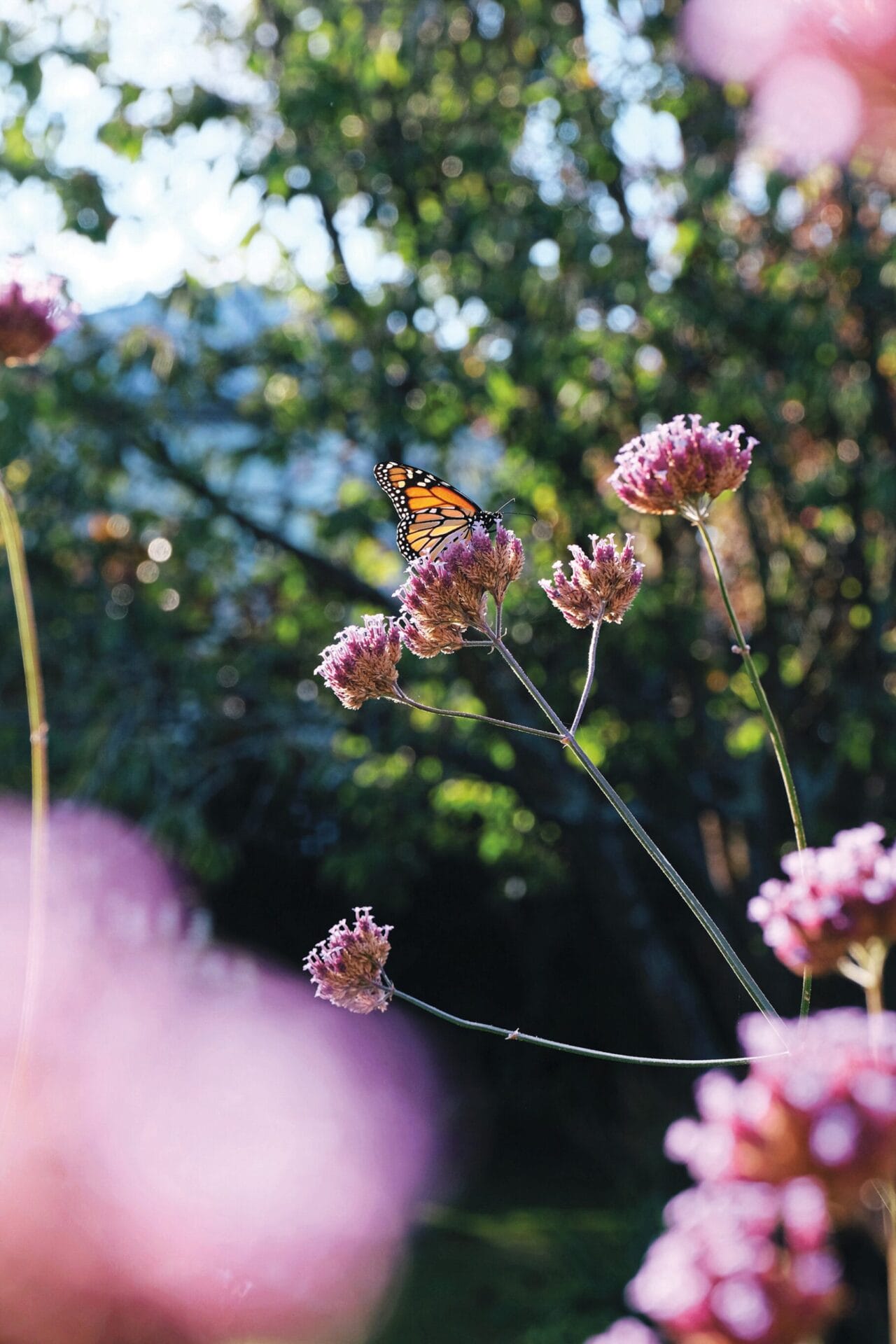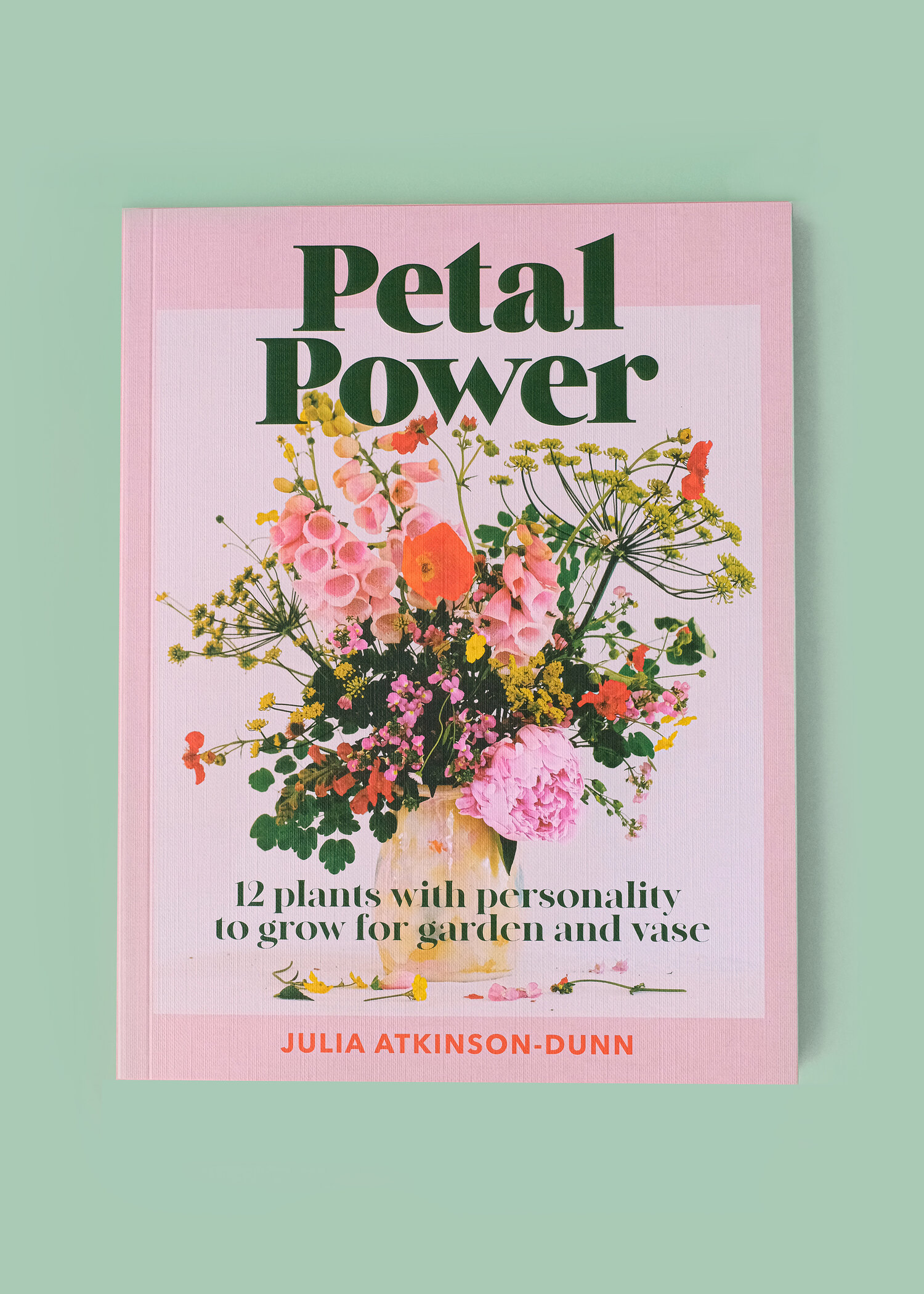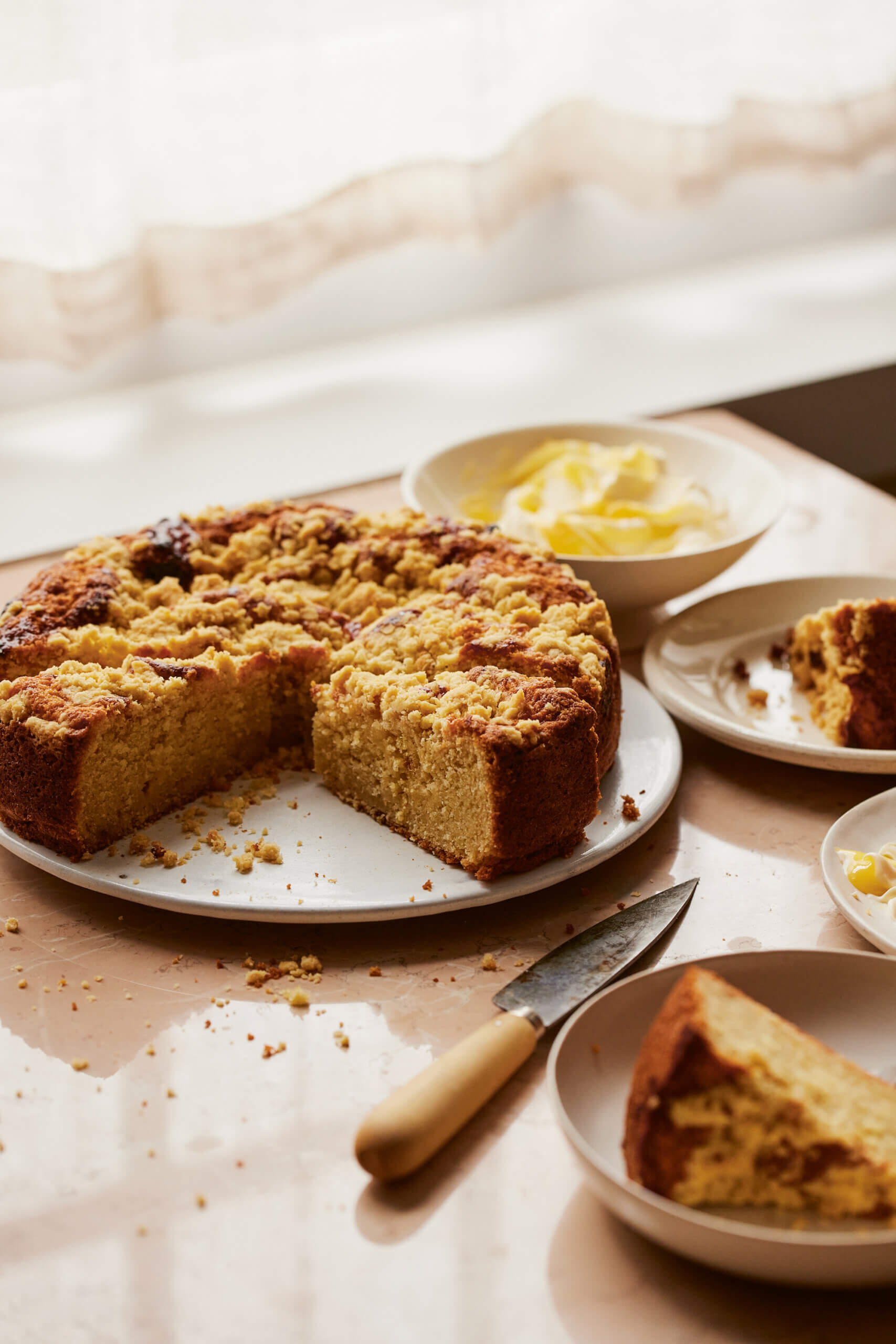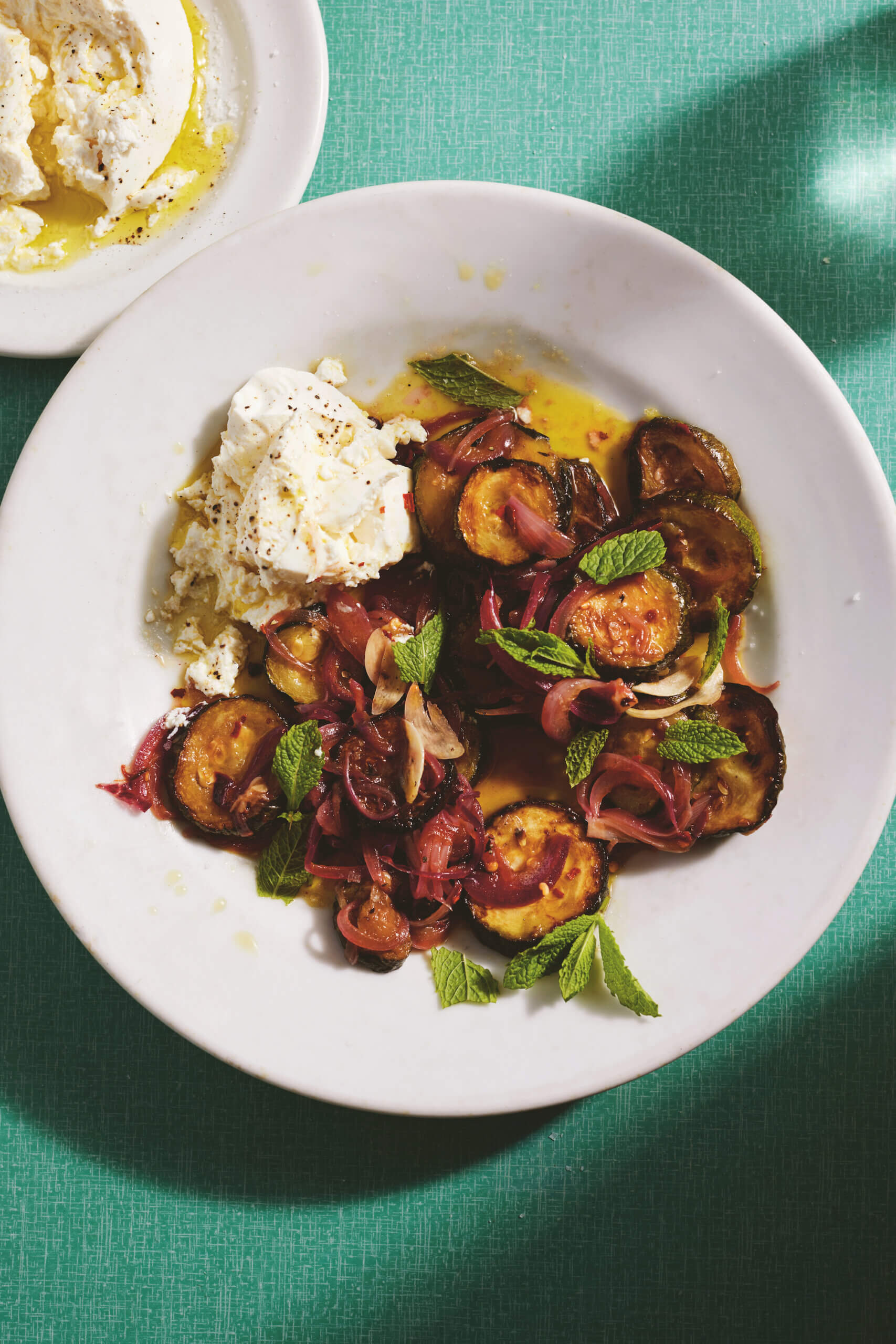VERBENA BONARIENSIS | Purpletop vervain, Argentinian vervain, verbena
Extracted from Petal Power by Julia Atkinson-Dunn
PLACE OF ORIGIN — South America
PLANT TYPE — Tall airy perennial with long cylindrical stems, sparse leaves and tightly clustered violet flowers. Will grow to 1.8m
FLOWERING — Late spring to late autumn
GROWING CONDITIONS — Full sun
WHEN TO PLANT — Raise seeds undercover to plant out or sow direct in position in mid-late spring. Seeds are slow to germinate. Transplant purchased plants at any time, spring to early autumn.
SPACING — 30–60 cm
WHERE TO PLANT — Due to its height it is excellent for the back of a bed, but its airy nature means that it will weave between other plants in the middle without being disruptive.
SUITABLE FOR CONTAINERS — Yes
CUT AND COME AGAIN — Yes
STAKING — Yes
SUSCEPTIBLE TO — Occasional powdery mildew
TOXICITY — No

Tall arms of Verbena bonariensis in beside its shorter growing cousin, Verbena rigida.
The sweeping heights reached by Verbena bonariensis even in its first season, providing it has good sun.
— Words by Julia Atkinson-Dunn, Petal Power
Every year it gets harder to pick a favourite, but verbena bonariensis (or VB as I call it) brings all the wild, generous and romantic vibes I pursue for my patch. It is my number one. It looks good with everybody. It flowers longer than anyone else. It is bee, butterfly, then bird heaven. It self-seeds like a maniac but I just merrily pot up all the babies to give away so that others catch the VB love too. I can honestly declare I’ll never have a garden without it.
Verbena bonariensis and its interesting blooms that produce new flowers while forming seed below them as the season goes on.
How to grow verbena bonariensis
Welcome to the plant you didn’t imagine could make your garden look so cool! VB is very easy to get going from seed and hasn’t been readily available in garden centres in New Zealand until recently. Try smaller, speciality nurseries, seed providers or online trading platforms where you can get seed straight from gardeners themselves.
Raise undercover in seed trays and do not be dismayed if your VB seeds are the last ones to germinate. Plant out in late spring or early summer and protect from birds as they get established. I build mini fences around my seedlings using sticks which works most of the time. Bear in mind that the mature plants are vigorous and will take up around 50 cm of space – they will reach well over a metre tall even in their first season.
VB only tolerates very little shade, so pick a good bright spot. Its intense efforts to grow will mean that while it will make it in a shady spot, it will be particularly spindly and heading off in crazy directions searching for sun.
Once you have VB, it tends to stick around, self-seeding throughout the garden much further than you might expect. Over the flowering season you will observe how new tiny flowers push through the head of the bloom, while seeds develop below. So it is flowering and seeding all at once! You quickly learn to identify its tiny red-stemmed seedlings meaning you can easily stay on top of it and patrol your garden borders. Particularly important if you live in the countryside. If you want to make use of these new self-seeded plants, leave them in place until they have a couple of sets of leaves before re-potting up or moving.
Verbena bonariensis is considered a three-year perennial, meaning that beyond its third season flowering it will start to under-perform. I leave my plant, complete with seed heads to be feasted on by birds during the early winter months before cutting all stems back down to around 20 cm from the ground. In an early winter garden, even the seed heads on tall stalks give structure. You will notice it starts to create a woody base, typical of a mature plant. Due to its prolific self-seeding, it doesn’t feel scary to pull out your tired mature plants knowing that you won’t be missing out the following season.
Verbena bonariensis provides an exciting opportunity to display arrangements with scopey height. It has a terrific vase life.
In the garden
Firstly, don’t be fooled when people nod in understanding when you mention you have Verbena bonariensis. Most will be thinking of the far more common ‘verbena’ which is often treated as an annual and a front of border ground cover.
VB brings you whimsy, structure and drama. My stand of it has always been a magnet to visitors as they marvel at its odd and very tall square-sided stems, topped with purple puff flowers.
I have loved planting it en masse as well as placing it within garden beds where it squirms up through its neighbours.
I also grow a stand of VB and Verbena rigida in a large pot. I have learned my lessons here, knowing that it will fry in a second if not regularly watered in the heat. That is why my pot is now right next to the tap!
I grow my own plants of both species mixed in with echinacea, rudbeckia, lupins, fennel and friends. To me they are deliciously rambling and architectural at the same time.
This is an extract from Petal Power by Julia Atkinson-Dunn.
(Published by Koa Press Limited, RRP $44.95, koapress.co.nz).
Buy Now









